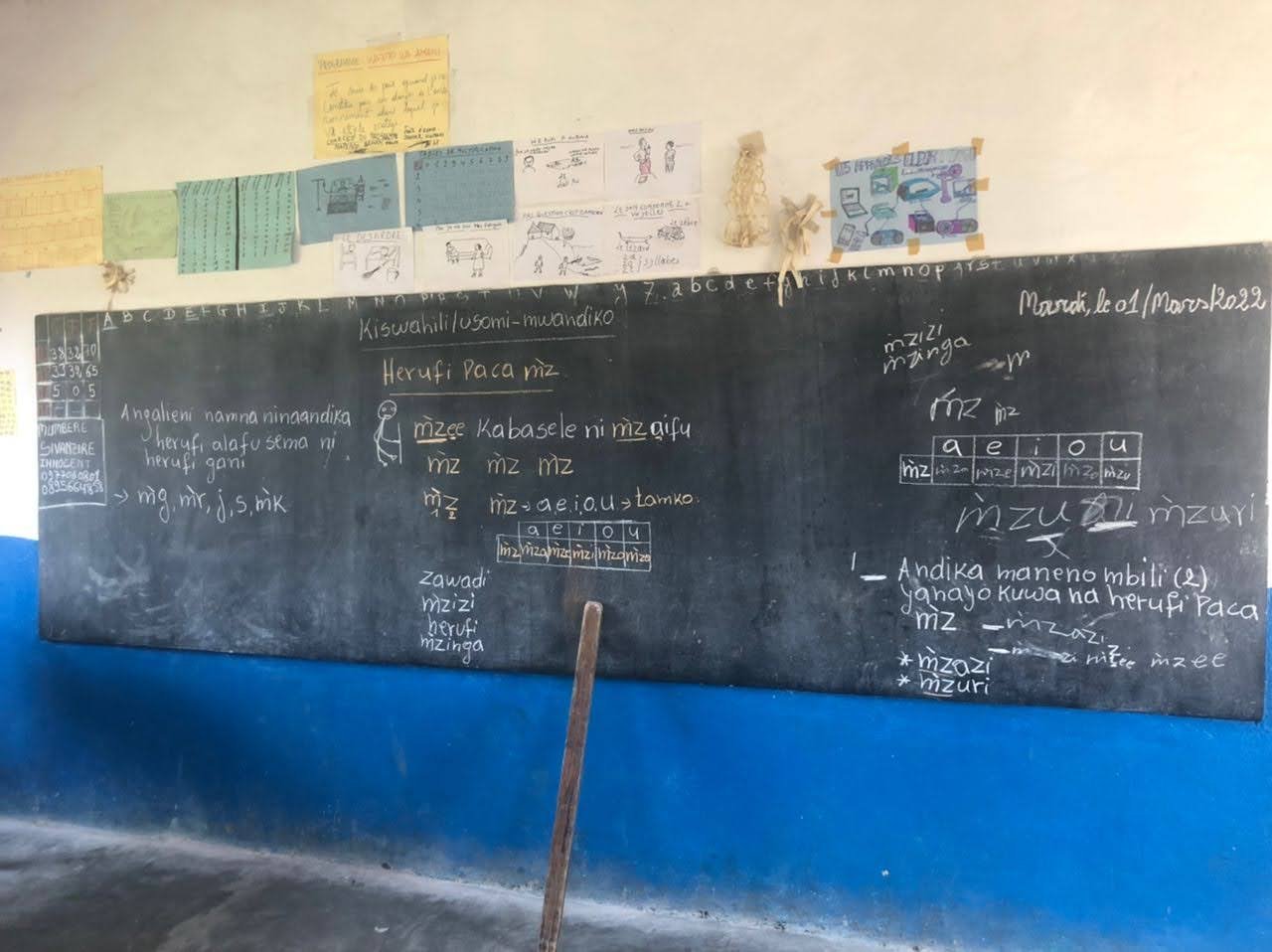Chalkboard Guides
Chalkboard Guides: equipping our teachers to build peace one lesson at a time
By: Ee-Reh Owo, Schools Director
The Problem
Recently, three of our headteachers were part of a research project looking into why teacher retention is so high at Justice Rising schools. One common theme throughout their interviews was the training and support we provide.
We take an evidence-based approach to teacher training, which until now has relied on face-to-face gatherings, but one problem with our training model is that the pace of change is slow, whilst the need for change is urgent. This isn’t a Congo-specific problem. Improving teaching is about changing habits, and this happens petit à petit, especially when relying solely on face-to-face training. Not only that, face-to-face training in a conflict zone carries its own logistical challenges that drive up costs: road blocks, kidnapping risks and curfews are some examples of the logistical constraints we have to overcome.
Meanwhile, there is robust evidence that providing teachers with structured lesson guides can drive substantial learning gains. So, after consulting deeply within and widely outside the organization, we decided to embark on developing our own guides and the idea for Chalkboard Guides was born.
We wanted to stick with the evidence from behavioral and cognitive science that informed our face-to-face training model to inform the content that went into the guides. This meant acknowledging existing teaching habits and introducing powerful tweaks, rather than attempting to change too much at once. Moreover, we want our teachers to use Chalkboard Guides because they find them helpful and effective! The onus was on the design team to create guides that teachers love and want to use in their lessons.
Our Solution
Chalkboard Guides harnesses the ubiquity of the board as a teaching tool to support our teachers to deliver quality education, building peace one lesson at a time. Each guide provides teachers with an objective for the lesson, teacher and student activities and a visual representation of the board work required.
Sample Chalkboard Guide
We need these guides to work for our teachers in rebel-held areas that we can’t reach in person, so we worked closely with our teachers in an iterative design process to produce highly intuitive guides. They informed every part of the guide: from the overall layout, to the content of the activities, to the administrative section at the top, even to the font. Our team has worked tirelessly to develop a design that incorporates teacher feedback on adoptability alongside the powerful tweaks that will improve teaching.
How our teachers feel about Chalkboard Guides


Chalkboards at the end of lessons during Chalkboard Guides field test in February 2022
Teachers felt Chalkboard Guides “lightened” their workload; they reported feeling “relieved” and “supported”:
“By using the guide as a teacher, I felt relieved and helped, because it contains everything and it makes my work easier.”
Where materials are scarce and teachers deal with the fallout of insecurity on a daily basis, we wanted to ease workload, so this was an integral goal of Chalkboard Guides. Our main priority was to improve teaching so the learning would improve, so we were encouraged when teachers told us that they also felt that Chalkboard Guides helped more students learn:
"Children who often daydreamed and lost their way in lessons now follow the lessons by following the chalkboard.”
“Even a child who is less gifted can succeed, because the material is there on the board.”
Next Steps
Having been tested and developed in our corner of the DRC, our vision is for Chalkboard Guides to be used in conflict-affected classrooms across the world. With this in mind, we conducted our third field test in partnership with Street Child, in a second country. With their global reach, we are excited for how Chalkboard Guides can support teachers to build peace in classrooms serving the most marginalized children around the world.
With our working prototype, our next step is to roll out a longer, six month pilot so we can see what impact the guides have on student learning.
Questions? Would you like to get involved? Email me at ee-reh.owo@justicerising.org or reach out on Twitter @EeRehLoves. I also wrote a more detailed, technical blog here for Global Schools Forum, delving into our iterative design process.

